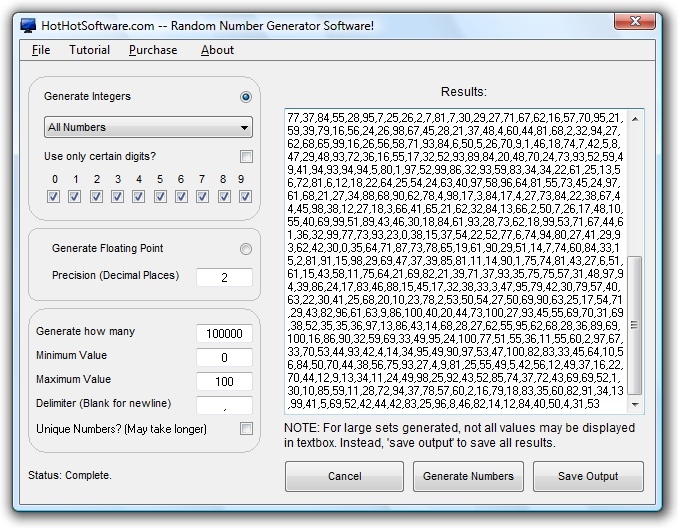
In fact, entropy can even be harvested from just two independent clock sources for instance by timing cycles of one clock via the other clock. Such an event, which is uncorrelated with the running timer, may be the push of a button by a user, the start of communication initiated by another (sub-)system or IC, or basically any other event not triggered by the ♜ (or any synchronous subsystem) itself. Using a high-speed timer, true entropy can be gathered by reading the timer value in response to some asynchronous event. In microcontroller environments a good source of entropy that is seldom thought of is the timing of events. Even the simplest deterministic sequences of values, like, when hashed produce data that will most likely pass any and all statistical randomness tests pretty well, although it is not "random" at all. Using cryptographic functions, like (one way) hash functions or cipher algorithms, usually easily produces the desired result as well this comes at a cost though: The "mixing" of those functions is by design extremely strong, which makes it impossible to determine the quality (= randomness) of the source data after the transformation. So, in order to generate random values with the desired properties (see above), some de-biasing needs to be done: A randomness extractor of some kind is needed. In reality, those values will often be (more or less) normally distributed (Gauss distributed) around some avarage value with some characteristic standard deviation, for example around 500 10 bit per sample. When measuring analog input with, say, 10 bit resolution, ideally the range of numbers gathered from the measurement will cover all values from 0 to 1023 and each value will occur with the same frequency (or probability) as any other value from that range. Un-biased, uniformly distributed numbers of high entropy are commonly those one wants, because their properties (not values) are somewhat normalized and can therefore be more reliably predicted. EMI is also likely to interfere with the measurement a regular cell phone placed reasonably close to the circuit during a call will most likely wreak havoc on any analog signals. However, as was stated before, the measured data is rarely un-biased.Īnalog electrical measurements may also be more or less susceptible to uncontrollable influence or even attacks from outside, e.g. Analog sources always have some unpredictable noise superimposed which can be "harvested".

Note that this project uses a H bridge, to know more click in the button below.Taking analog "real world" measurements usually is a good source of entropy (a.k.a. When a led is turned on others stay turned off.īelow we have another exemple, a car which randomly moves forward and backward. The leds in output 2, 10 and 12 turn on when the random number is 1, 2 or 4 respectively.

This circuit control leds using random commands.

The “long” in the first line is a “int” classification, which can occupy 4 or 8 memory bytes while the “int” can only have 4 bytes. This command serve to generate random numbers, the number between the brackets shows the random number generation band, in this exemple go from 0 to 99. You must see numbers being generated randomly each second.
#Generate random number arduino serial
Let’s implement a program which generate random numbers in the serial screen, here is the algorithm.Ĭlicking in the button in the upper right corner of Arduino`s window, to see the serial screen. One of the applications is to control devices randomly.
#Generate random number arduino how to
In this forth part of Arduino tutorial, I will show how to use random commands to generate random numbers.


 0 kommentar(er)
0 kommentar(er)
